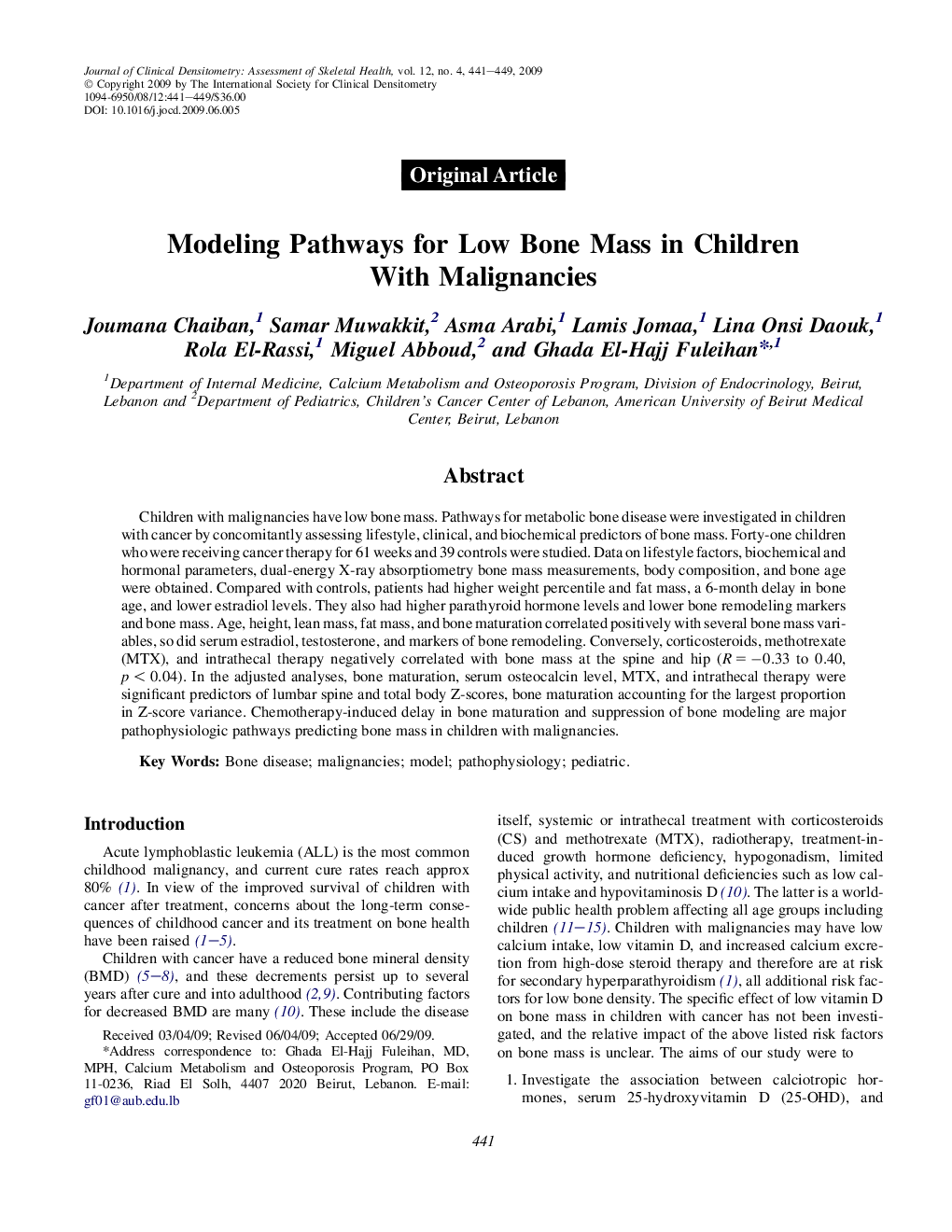| Article ID | Journal | Published Year | Pages | File Type |
|---|---|---|---|---|
| 3271664 | Journal of Clinical Densitometry | 2009 | 9 Pages |
Abstract
Children with malignancies have low bone mass. Pathways for metabolic bone disease were investigated in children with cancer by concomitantly assessing lifestyle, clinical, and biochemical predictors of bone mass. Forty-one children who were receiving cancer therapy for 61 weeks and 39 controls were studied. Data on lifestyle factors, biochemical and hormonal parameters, dual-energy X-ray absorptiometry bone mass measurements, body composition, and bone age were obtained. Compared with controls, patients had higher weight percentile and fat mass, a 6-month delay in bone age, and lower estradiol levels. They also had higher parathyroid hormone levels and lower bone remodeling markers and bone mass. Age, height, lean mass, fat mass, and bone maturation correlated positively with several bone mass variables, so did serum estradiol, testosterone, and markers of bone remodeling. Conversely, corticosteroids, methotrexate (MTX), and intrathecal therapy negatively correlated with bone mass at the spine and hip (R = â0.33 to 0.40, p < 0.04). In the adjusted analyses, bone maturation, serum osteocalcin level, MTX, and intrathecal therapy were significant predictors of lumbar spine and total body Z-scores, bone maturation accounting for the largest proportion in Z-score variance. Chemotherapy-induced delay in bone maturation and suppression of bone modeling are major pathophysiologic pathways predicting bone mass in children with malignancies.
Related Topics
Health Sciences
Medicine and Dentistry
Endocrinology, Diabetes and Metabolism
Authors
Joumana Chaiban, Samar Muwakkit, Asma Arabi, Lamis Jomaa, Lina Onsi Daouk, Rola El-Rassi, Miguel Abboud, Ghada El-Hajj Fuleihan,
